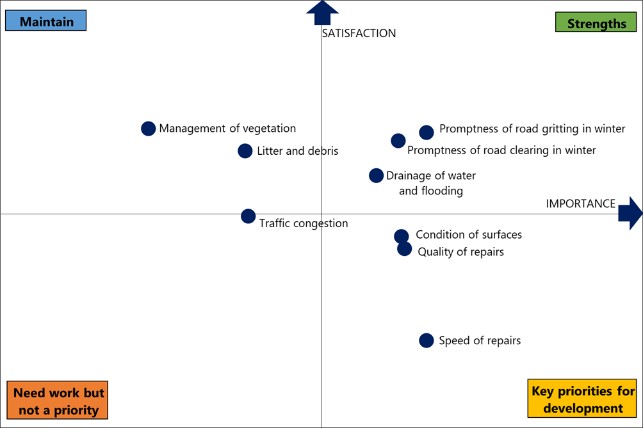Appendix B: Trunk road management and maintenance - important versus satisfaction
In the survey, importance and satisfaction were recorded on a four and five point scale respectively. In order to ‘plot’ the two measures on equivalent scales and show the relationship between them, the scores for each were standardised using z-scores. A z-score expresses each item in a numerical series in terms of the series mean and standard deviation to tell us which have scored higher or lower than average. The z score for any item is calculated as the value minus the mean of the series, divided by the standard deviation of the series.
The z scores are plotted on a quadrant chart. The four quadrants are: Maintain (top left), Strengths (top right), Need work but not a priority (bottom left) and Key priorities for development (bottom right).
In this analysis, the ‘ideal’ scenario is for aspects accorded the highest level of importance to appear in the top right quadrant of the chart – e.g. those deemed of relatively high importance with high levels of satisfaction (‘Strengths’). Aspects that appear in the bottom right quadrant; that is, those deemed of relatively high importance but with which satisfaction is low, should be considered key priorities for development.
As shown in Figure B.1, the aspects that appear in the bottom right quadrant (those deemed of relatively high importance but with which satisfaction is low) and that should be considered key priorities for development are: condition of surfaces, quality of repairs, and speed of repairs.
